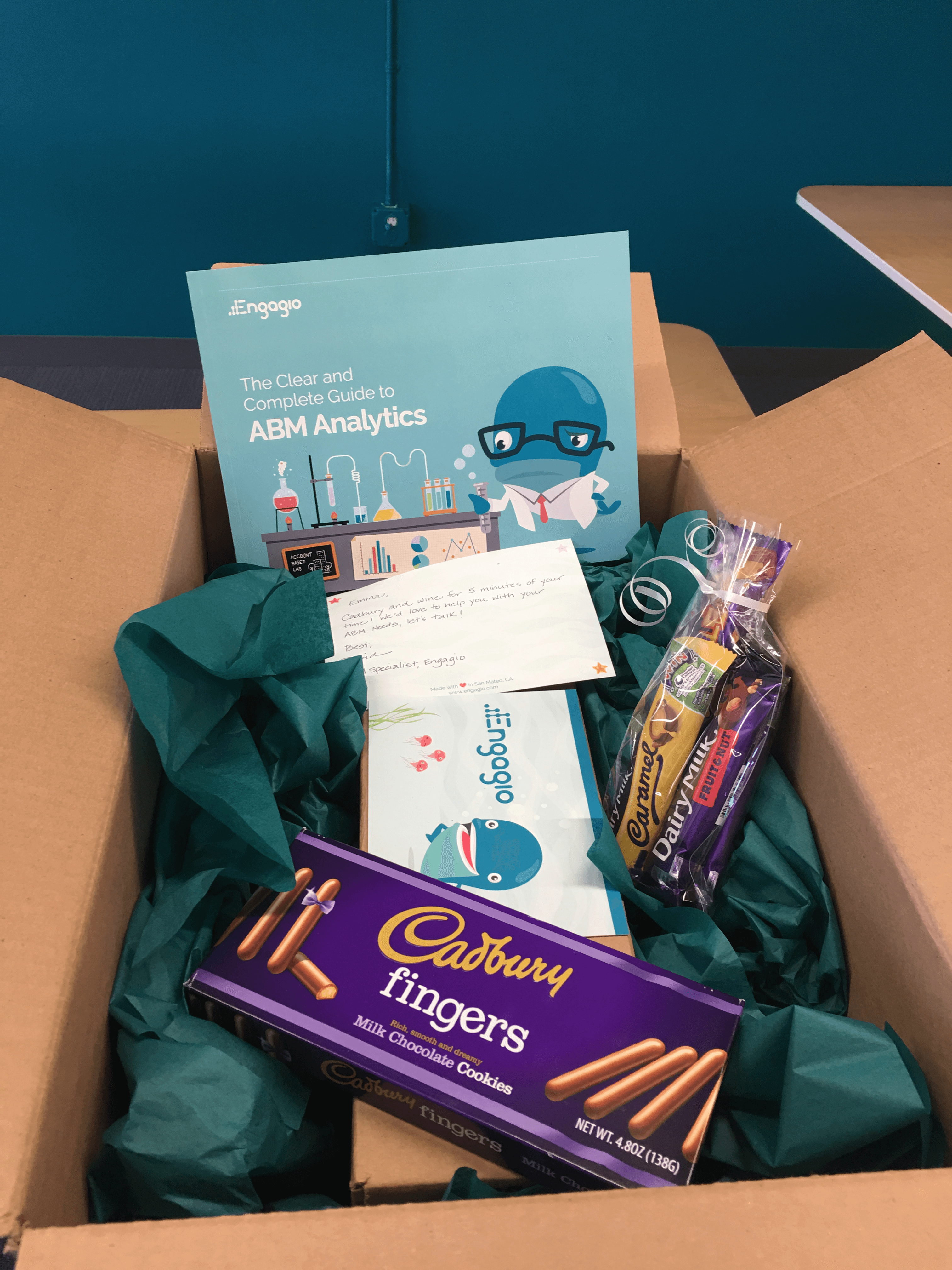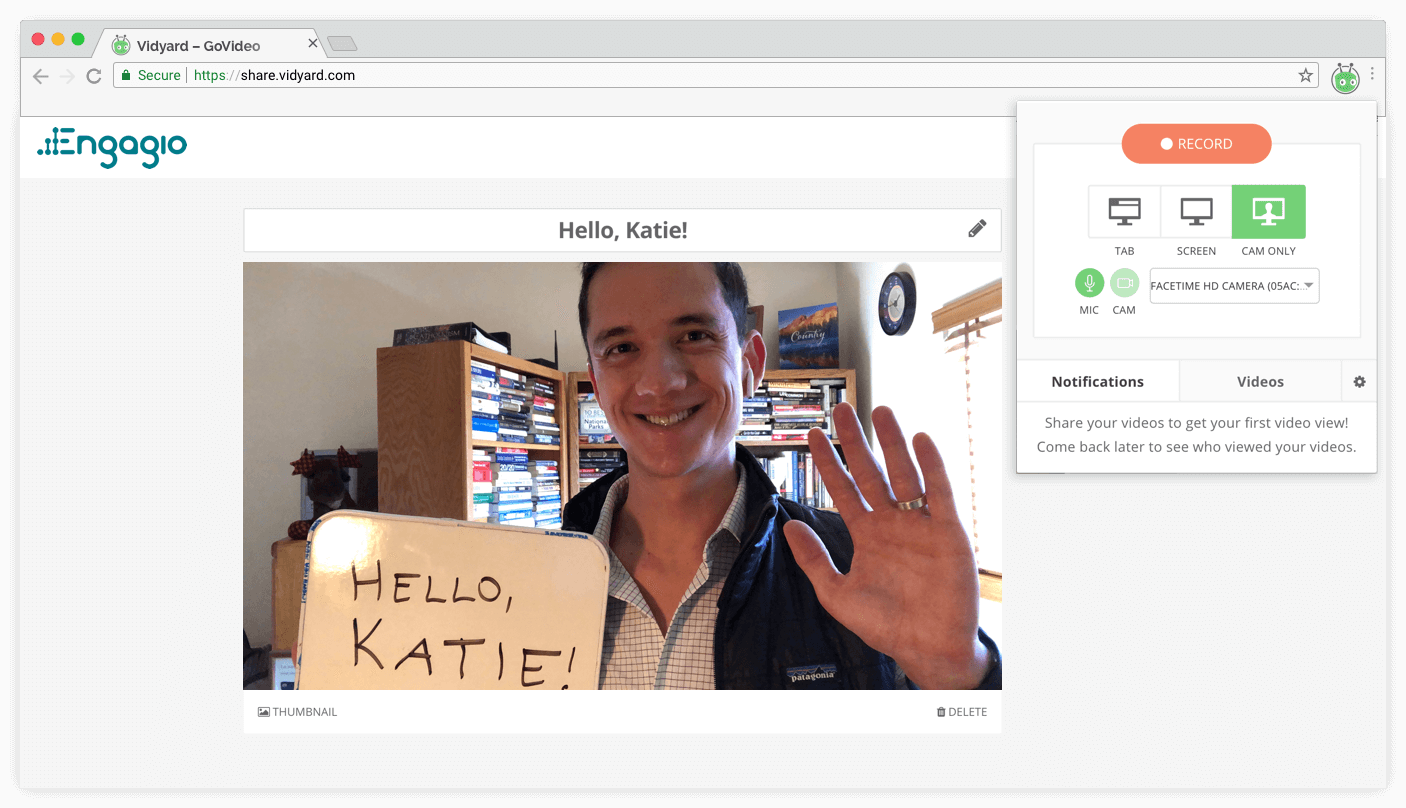Focusing on the customer buying experience is more important than ever.
In today’s information age, buyers have more and more power over sellers. As a result, there’s an increased demand in personalized, relevant experiences.
- 77% of consumers have chosen, recommended or paid more for a brand that provides a personalized service or experience (Forrester)
- 74% of online consumers get frustrated with websites when content appears that has nothing to do with their interests (Janrain)
- 85% of internet users specifically expect and accept personalization as a part of their online experience (eMarketer)
- 59% of customers say that personalization influences their buying decisions (Infosys)
In today’s competitive environment, personalization is a critical differentiator.
That’s why we wrote The B2B Marketer’s Guide to ABM Personalization at Scale. We set out to give you the keys to delivering a more personal, relevant and timely message to your buyers.
We walk you through the frameworks we use, offer some practical tactics, and end by revealing some of our plays along with the results.
Key Highlights: ABM Personalization Done Right
- Personalization is Essential: Buyers expect tailored experiences; 77% choose brands offering personalized service, making it a critical business differentiator.
- Understand the Customer Journey: Mapping buyer stages, challenges, and behaviors is foundational to creating relevant and timely ABM campaigns.
- Channels Thrive with Content: Whether email, video, or social, success hinges on the quality and personalization of your content.
- Tailored ABM Plays Work: Examples like personalized packages, custom bobbleheads, and tailored videos deliver measurable results, from higher meeting rates to increased engagement.
- Data Drives Results: Clean, segmented data ensures ABM campaigns scale effectively while maintaining a personal touch.
Is Email Dead? What About Social Selling?
We are all familiar with claims in the market that cold calling is dead! Email is dead! Social selling is dead!
While channels vacillate in popularity, the key is really what fuels the channels – the content. We know that when messages are timely and relevant there is better engagement from buyers.
This is a cornerstone for successful ABM. When you are trying to break into target accounts and drive ongoing engagement – the right message matters!
A Better Buying Experience
For effective personalization in ABM, you must have a deep understanding of not only your target accounts and ideal customer profiles, but also the customer journey.
You must understand how they buy, the structure of the organization, their challenges, the buying criteria, and what they need to do at every stage of the buying process. The customer journey is the complete sum of experiences and interactions that a customer goes through when making a purchasing decision. It should not be seen as a checklist for reps detailing what to say.
The customer journey must take the point of view of the customer.
When you acknowledge the buyer’s journey and put the focus on delivering an exceptional experience, only then will you be able to deliver a personal, relevant message.
That’s why good ABM starts before you dream up your next ABM campaign. It starts with knowing the buying experience and mapping out the journey.
Here’s how:
- Align Sales and Marketing around the challenges and outcomes of your buyers.
- Define the stages that the buyers go through when making a decision.
- Uncover valuable buyer persona insights at each stage.
ABM Examples from Engagio’s Playbook
Now, it’s time to put theory into action. Here are three plays from our playbook. We’ve chosen one play from each of the three styles of ABM (one-to-one, one-to-few, and one-to-many).
ABM “Classic” One-to-One: Executive Sponsor Play
When you’re looking at breaking into an account, you need to do research.
In this case, we found out that this decision-maker loved wine and chocolate. We then put together a personalized 1:1 package with Cadbury chocolate, wine, customized content, and a handwritten note that started with “Cadbury and wine for 5 minutes of your time.”
Stage: Top of funnel
Target: VP of Marketing at a Tier 1 account
Play:
- Touch 1: Send package
- Touch 2: Send email upon package delivery
- Touch 3: Phone call
Goal: Meeting
Results: Meeting set
ABM “Lite” One-to-few: Door Opener Play
To open doors at target accounts, we took Director of Marketing and above titles and based on their LinkedIn profiles, created custom bobbleheads that looked like them.
Our reps took a picture of the final product, pasted them into a pre-built play, and invited decision makers to come pick up their personalized bobbleheads at Dreamforce. If they were not able to pick them up or were not attending Dreamforce, we offered to send it to them after meeting with a rep.
After all, who doesn’t want their own personalized bobblehead?
Stage: Top of funnel
Target: Director of Marketing and above at target accounts
Play:
- Touch 1: Email inviting the decision maker to pick up their personalized bobblehead
- Touch 2: Hosted event where we handed out the bobbleheads
- Touch 3: Offered to ship the bobblehead directly to them if they attend a meeting with a rep.
Results: 31% meeting rate
Programmatic ABM One-to-Many: Build Buyer Relationships Play
The most forward-thinking organizations are using video to stand out in the noise.
However, you must utilize personalization in order to get results. Our favorite tool for this is Vidyard.
The Vidyard platform customizes the content and delivers a video that looks like it’s just for a single prospect, when in reality, this is going out to thousands of accounts.
Stage: Mid-funnel
Target: Director of Marketing and above at all target accounts
Play: Once your data is clean and list is segmented, launch your Vidyard video!
Results: 4.1x increase in response rates.
How to Measure ABM Success Beyond Engagement
While engagement metrics such as clicks, views, and responses are valuable, truly measuring ABM success requires going deeper. Here’s how you can evaluate the effectiveness of your ABM campaigns and their impact on business outcomes:
1. Account-Level Revenue Impact
- What to Measure: Revenue generated from targeted accounts.
- Why It Matters: ABM is all about focusing on high-value accounts, so tracking the direct revenue impact helps evaluate ROI.
- Example: Calculate revenue contribution by comparing pre- and post-campaign revenues within target accounts.
2. Deal Velocity
- What to Measure: The time it takes for an account to move through the sales funnel.
- Why It Matters: Faster deal velocity indicates effective nurturing and alignment of your ABM efforts with the buyer’s journey.
- Example: Compare average deal closure times between ABM-targeted accounts and non-targeted accounts.
3. Account Penetration and Expansion
- What to Measure: Number of decision-makers engaged and revenue from cross-sell/upsell opportunities.
- Why It Matters: Successful ABM strategies should deepen relationships and unlock growth within existing accounts.
- Example: Track product adoption rates or upsell opportunities in ABM-focused accounts.
4. Customer Lifetime Value (CLV)
- What to Measure: Projected revenue from accounts over their entire relationship with your company.
- Why It Matters: ABM emphasizes quality over quantity, so a high CLV is a strong indicator of success.
- Example: Use a formula incorporating recurring revenue, churn rates, and upsell potential to estimate CLV.
5. Cost Per Account
- What to Measure: Total campaign cost divided by the number of accounts engaged.
- Why It Matters: Identifying the most cost-effective tactics helps refine your strategy.
- Example: Compare CPA across different ABM styles (one-to-one, one-to-few, one-to-many).
Top Tools for Scaling ABM Personalization
Scaling personalization in ABM requires robust tools that integrate data, streamline workflows, and deliver targeted messaging. Here are some of the best tools to consider:
1. HubSpot
- Best For: Marketing automation and CRM integration.
- Key Features: Comprehensive ABM features, including account targeting, pipeline tracking, and personalization tools.
- Why It Stands Out: An intuitive interface makes it easy for teams to align and execute ABM campaigns at scale.
2. Salesforce Account Engagement (formerly Pardot)
- Best For: Enterprise-level ABM campaigns.
- Key Features: AI-driven lead scoring, dynamic content personalization, and robust reporting capabilities.
- Why It Stands Out: Deep integrations with Salesforce CRM for seamless campaign execution.
3. Demandbase
- Best For: End-to-end ABM solutions.
- Key Features: Intent data analysis, account scoring, and multichannel orchestration.
- Why It Stands Out: Its AI-powered insights help prioritize high-value accounts.
4. Vidyard
- Best For: Personalized video marketing.
- Key Features: Dynamic video content creation, analytics, and integrations with major CRMs.
- Why It Stands Out: Enables 1:1 personalized video outreach at scale, boosting engagement.
5. LinkedIn Sales Navigator
- Best For: Social selling and account targeting.
- Key Features: Advanced search filters, real-time insights, and account mapping tools.
- Why It Stands Out: Provides unparalleled access to decision-makers and insights for B2B accounts.
6. Clearbit
- Best For: Data enrichment and account insights.
- Key Features: Real-time enrichment of contact and account data, segmentation tools, and API integration.
- Why It Stands Out: Enhances data accuracy, fueling better personalization.
7. Terminus
- Best For: Omnichannel ABM campaigns.
- Key Features: Account-based advertising, email signature targeting, and multichannel engagement.
- Why It Stands Out: Simplifies scaling ABM campaigns with a centralized platform.
8. Drift
- Best For: Conversational marketing and chat.
- Key Features: AI-powered chatbots, account targeting, and playbook creation.
- Why It Stands Out: Drives real-time engagement with targeted accounts.
9. ZoomInfo
- Best For: Data-driven ABM insights.
- Key Features: Contact database, intent signals, and sales intelligence tools.
- Why It Stands Out: Provides detailed account insights to fuel ABM strategies.
10. Marketo Engage
- Best For: Advanced marketing automation.
- Key Features: Lead scoring, cross-channel nurturing, and personalization tools.
- Why It Stands Out: Ideal for complex, large-scale ABM campaigns.
Conclusion
The modern buyer demands personalized, relevant, and seamless interactions.
Personalization is no longer optional – it’s the competitive edge businesses need to stand out. By understanding customer journeys, aligning sales and marketing, and leveraging innovative ABM plays, you can create memorable experiences that resonate with your audience and drive measurable outcomes.
With tools, frameworks, and creativity, your ABM strategy can transform into a revenue-driving powerhouse.
For more real-life ABM examples, read Engagio’s The B2B Marketer’s Guide to ABM Personalization at Scale. In it, we’ll also cover
- The three-tiered approach to ABM personalization
- How to allocate your resources properly to achieve personalization at scale
- The key to understanding how your buyers buy
- And more!



